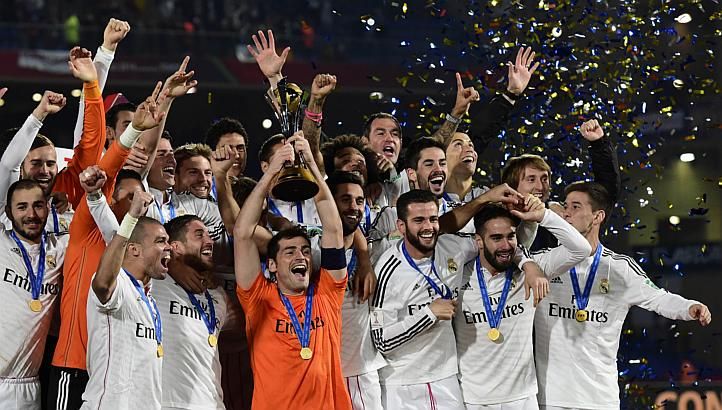
Why FIFA Club World Cup is a waste of time

FIFA Club World Cup seems like a conundrum to many, particularly the ones who are uninitiated into the beautiful game. Questions like ‘FIFA just took place in the summer, is it still going on or are they doing it all over again now?’ are not far from being uttered.
But even the partisan followers of the game, the True blues, the Gooners, the Red Devils et al of the footballing world are hardly perturbed by this tournament. And frankly the lack of any real fanfare associated with Club World Cup is just a mirror to how things stand in the international club football circuit.
While the problems are very many, the lack of any vigor and passion about a competition that sounds so crème de la crème is worth noticing. The tournament was a much simpler affair initially, played amongst the two major continents i.e. Europe and South America; yet it had a far bigger pedigree.
History of the Club World Cup
Starting out as just the Intercontinental cup, pitting the European Cup winners against the Copa Libertadores champions, the tournament was a hard-fought competition to see which style of football ruled the roost. It was not ideally to find the best football club of the world as it is touted to do in its 21st century version, but was still, hands down, a better competition.
The competition was a great success initially, but really took off on another tangent when things started heating up between teams of the two continents at the end of 60s. With the bellicose approach of the South Americans, especially Argentine teams that included dangerous fouls, on-field confrontations and intimidating South American home support, the European clubs felt it would be better to forego the crowning glory than to face the music in South America.
With a shift to a neutral venue (Japan) and then the rechristening of the tournament to include the rest of the continents, the edginess and the jingoism involved were slowly taken out from the tournament. Coupled with the fact that the gap between the European clubs and their South American counterparts gradually snowballed, the tournament slowly became this one-sided mundane namesake tournament.
The role of South American domestic football
The gulf in class between the two continents is really what distinguishes the tournament even today. South American football has long been marred by issues both on and off the pitch. While lack of financial aid is one of the many issues, it is one that has had quite a big say in how club football works today.
South America has been this reservoir of talent, talent waiting to be discovered. While there is no doubt that big teams are always on the lookout for some of the South American flair, the sad story is that South American clubs have slowly accustomed themselves to this and accept the role of provider of talent to the European supermarket.
As seen with the Neymar transfer or for that matter with Carlos Tevez and Javier Mascherano’s smooth moves to the English football, the clubs hardly have their say in matters like keeping hold of young exciting talents. With the complex player owning system, where “sporting companies” own a club’s player, the way to move away from the alma mater is fast becoming simper and swifter for these stars of the future.
The European clubs have also had it easy in the exchange. Well aware of their popularity and with their purchasing power, the clubs know that no matter what happens the talent will leave his club for his big European move.
The European supermarket
In their iconic book, The Soccernomics, Stefan Szymanski and Simon Kuper state that the biggest of the football clubs are not even close to the top 500 companies of the world, their revenues not even 1% of those of corporate bigwigs of the modern day world. Yet still we see the European Clubs growing from strength to strength particularly in attracting players and looking viable to the masses.
What makes them so much popular, not just to the South American kid who in his hearts of heart always knows that he will make it to Europe, don the jersey of The Uniteds, Madrids and Barcelonas of the world, but also to all those fans and supporters, hundreds and thousands of miles away from the clubs, who likewise swear their allegiance to the club?
The European football and the clubs have become these behemoth brands that people want to be associated with and hence their undisputed leadership in the world. The exponential rise of European clubs is due to this appeal of theirs, and this is why Real Madrid making light of beating their CONMEBOL counterpart San Lorenzo is a mockery.
A gulf of class
Another thing that mars the competition is the general lack of interest, even after nearly a decade of existence, from the cream of the footballing world. It might be a big deal for the rest of the teams from all the different continents to test their mettle against the best of each continent, and for players to be “discovered” (case in point – A 17 year old Alexandre Pato’s scintillating performance for Internacional in 2006).
But for most of the European clubs participating in a Club World Cup is a tedious task, a task which involves travelling to another continent in the middle of their season and facing sub-standard opponents. This is made even worse by the fact that some of the league (like EPL) play without a winter break thus adding to the already congested list of fixtures.
The solutions are far and few to be honest, the teams from the rest of the continents no matter how lagging in class, are there due to their effort and the format of the championship. While nothing can surely happen on this front, the changes can be perhaps made in the way the competition has been formatted.
Giving the CONMEBOL and UEFA Champions a direct entry into the semi finals of the competitions helps in maintaining the status quo and thus making it far less appealing for a neutral. It feels like a custom made idea for a European clubs coronation ceremony, done so as to officially hand them the World champion’s tag and celebrate their ascent.